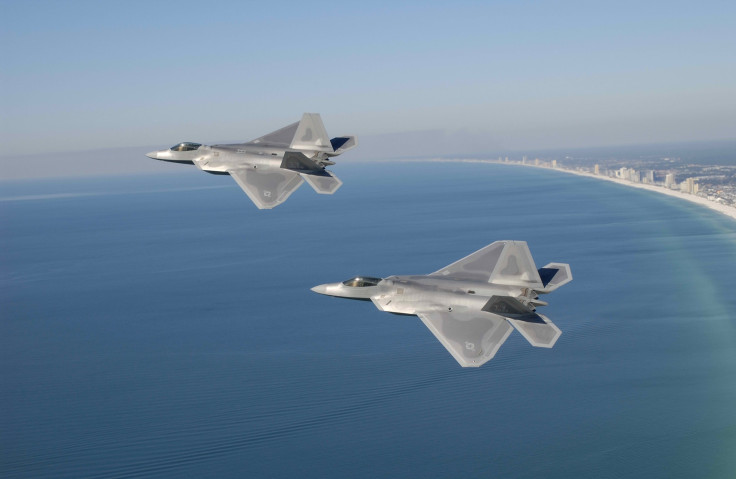Florida Crash Puts Spotlight On Troubled F-22 Raptor

Just days after lifting many of the flight restrictions imposed on its most modern fighter, the F-22 Raptor, the U.S. Air Force has lost another one of the expensive, stealthy jets in a crash in Florida.
According to a statement on the USAF website, the Raptor crashed on Thursday afternoon at Tyndall Air Force Base. The pilot ejected safely, and the causes of the crash are still unknown.
The good news, aside from the pilot surviving and no one else getting hurt as the plane went down near a highway, is that the crash is likely not related to the mysterious oxygen problems that led to a grounding of the entire fleet. The problems have for years deviled investigators who tried without success to find the cause of pilot hypoxia, a condition that causes disorientation and loss of consciousness due to insufficent oxygen flow.
The latest theory is that the oxygen-generation system carried on board by the jet was faulty, and a spate of recent modification seems to have fixed the issue.
An Air Force official told ABC News that “Initial indications are, from talking to the pilot and from analyzing initial evidence ... [that] it doesn’t look like it was related to any physiological problems,” the official said. The pilot is in “good shape” and has been speaking with investigators about the crash.
The most damage may have been financial, in fact. When Lockheed Martin delivered the last of 196 Raptors built, earlier this year, estimates were that each one cost more than $400 million. The Florida crash is the third loss of a Raptor since it entered service in 2005, for a total of more than 1 billion dollars' worth of high-tech hardware lost.
None of those losses were in combat. America hasn't used its relatively small F-22 fleet in any of the conflicts it has fought recently, in Iraq, Afghanistan and Libya, preferring older, combat-tested planes over the Raptor. Nearly invisibile to radar, it was designed in the waning days of the Cold War to penetrate heavily defended airspace and shoot down enemy planes -- something the U.S. hasn't done since the 1991 Gulf War.
More worrisome for the Air Force may be the fact that the Tyndall crash happened shortly after it had cleared the Raptor to fly unrestricted. The service has removed most of the operating restrictions it had imposed on the F-22 late last year, according to a report in Flightglobal magazine, except for a ban on flying higher than 35,000 feet (the Raptor can easily go to 60,000, higher than most of its likely foes).
In 2011, the Air Force grounded the entire fleet after several incidents tied to hypoxia, but flights resumed after three months with restrictions that included never flying more than 30 minutes away from a landing site. Since then the fleet had completed 21,000 sorties without incident, until Thursday.
© Copyright IBTimes 2025. All rights reserved.






















